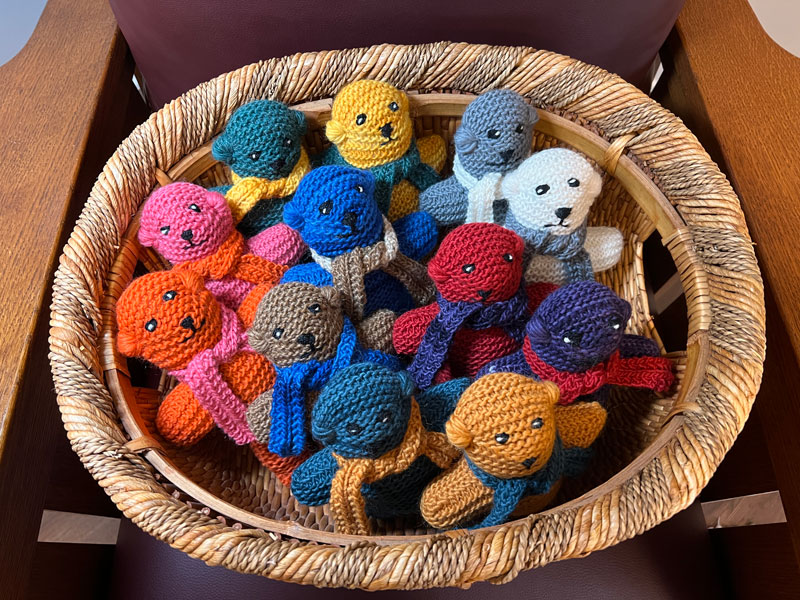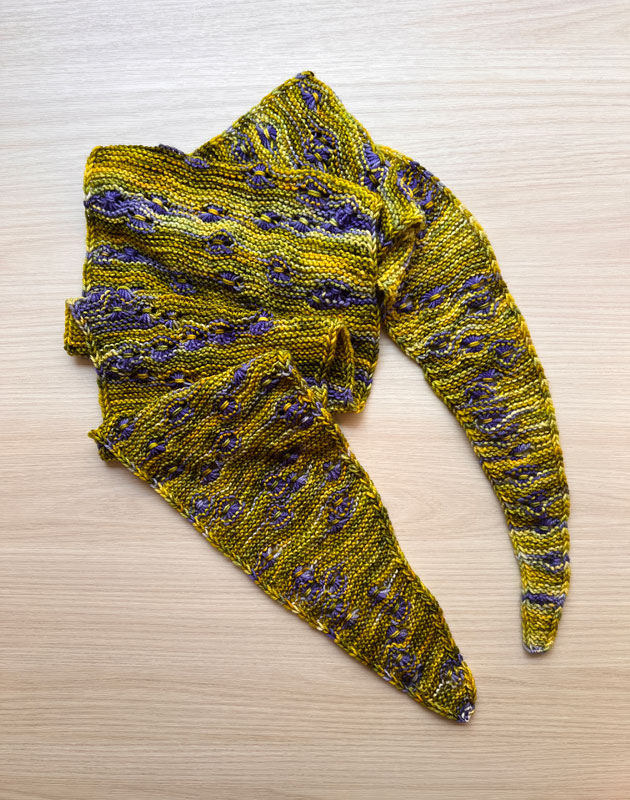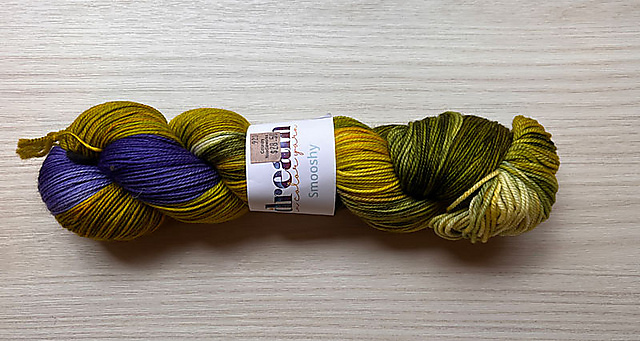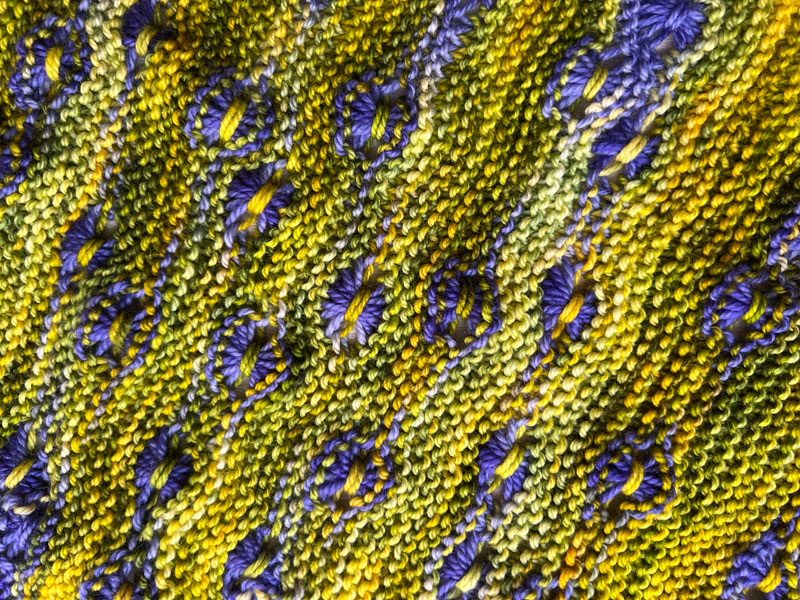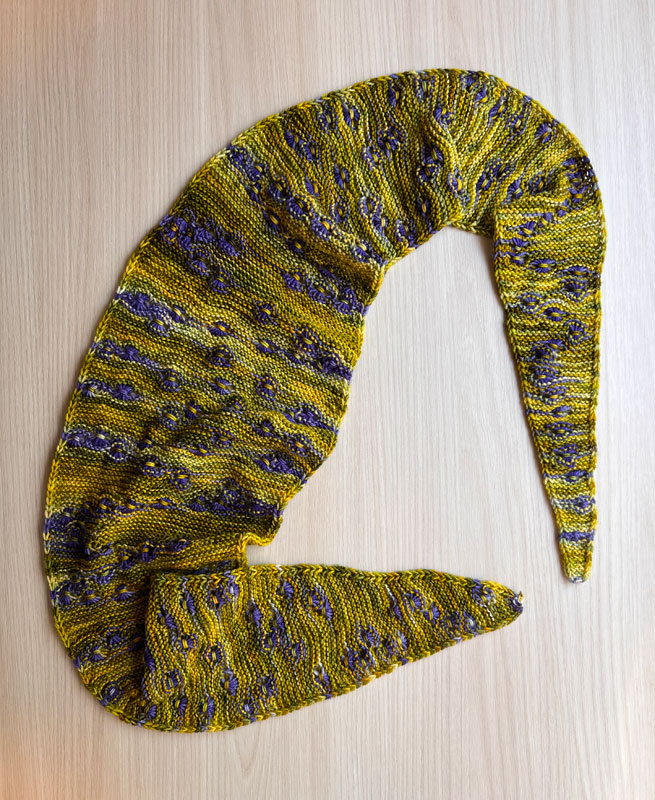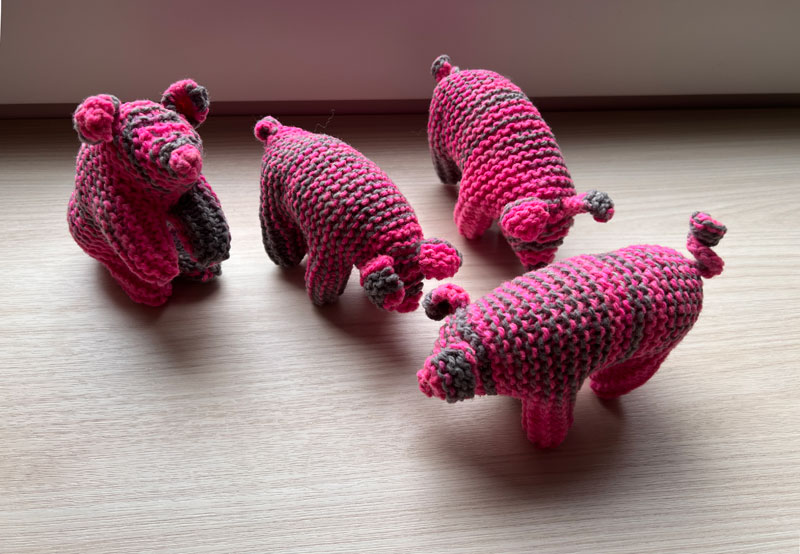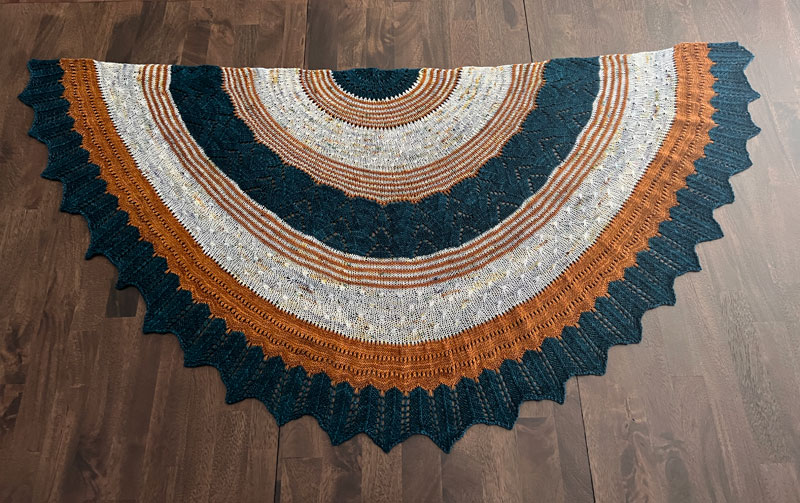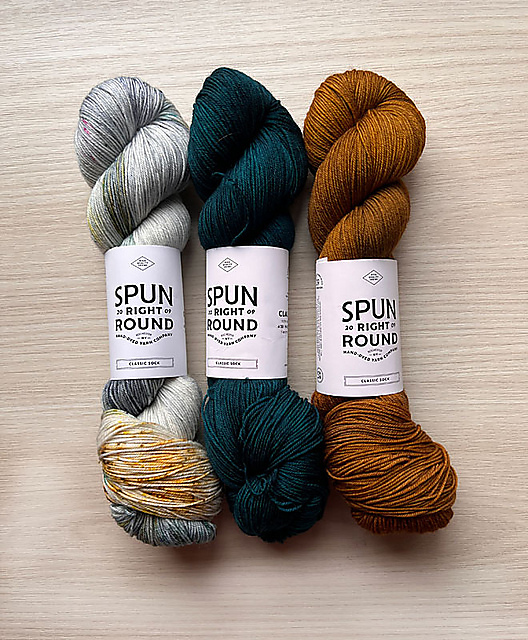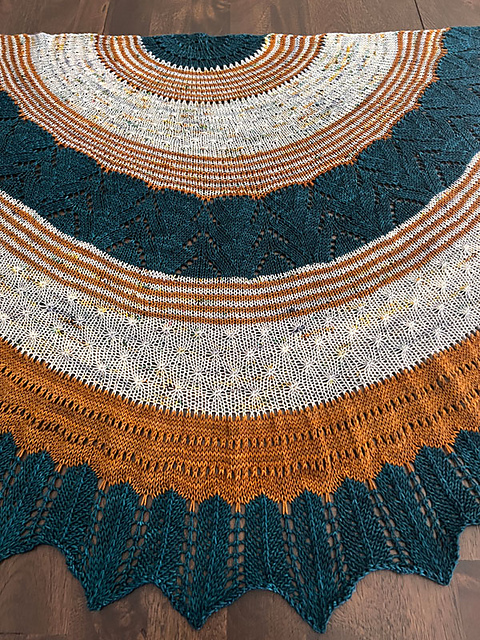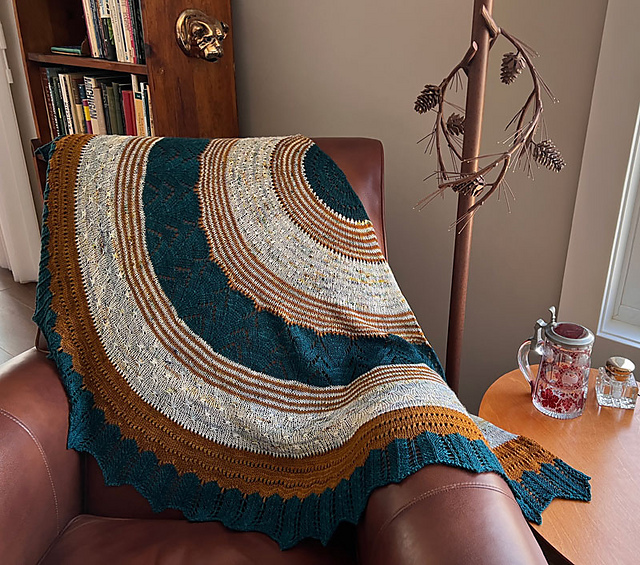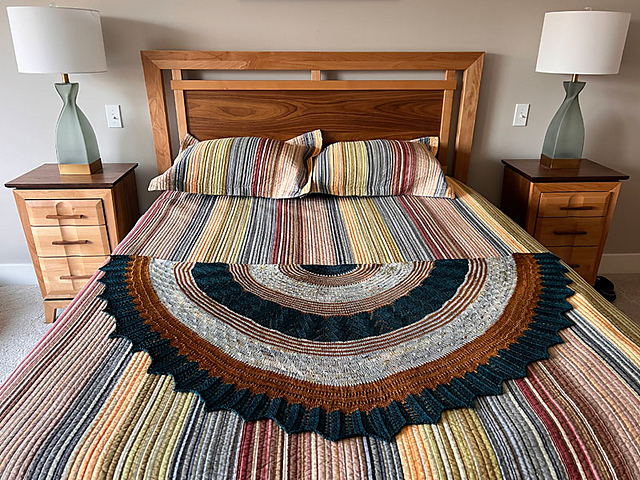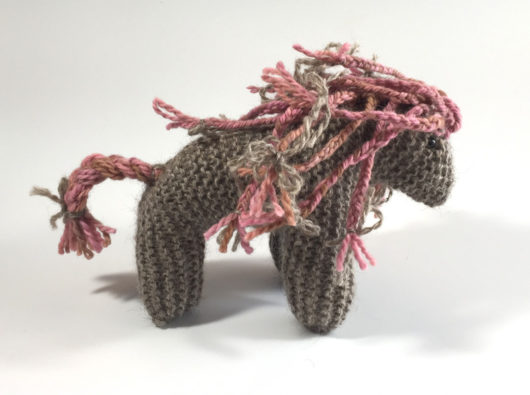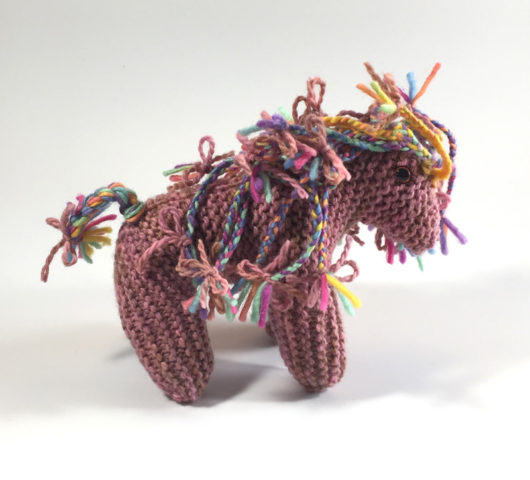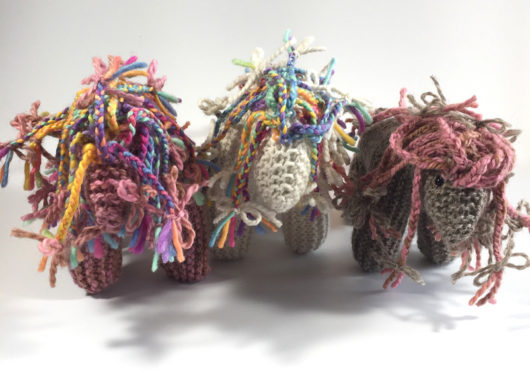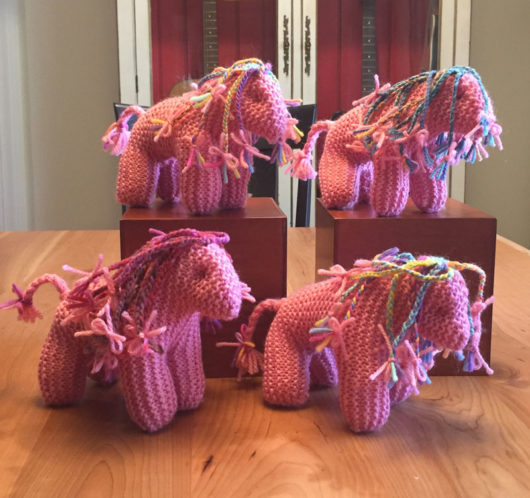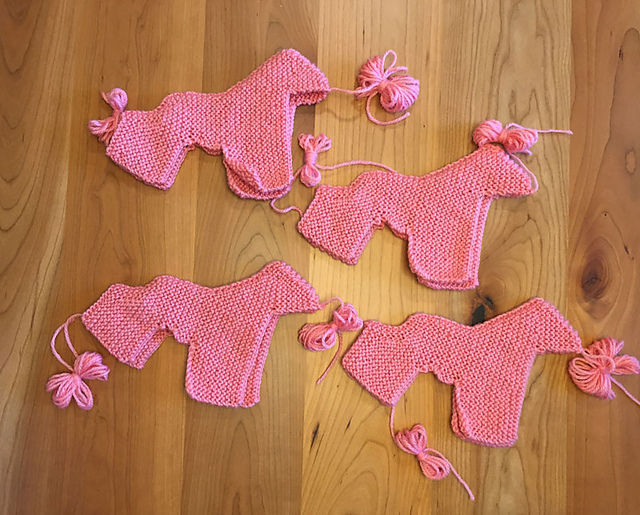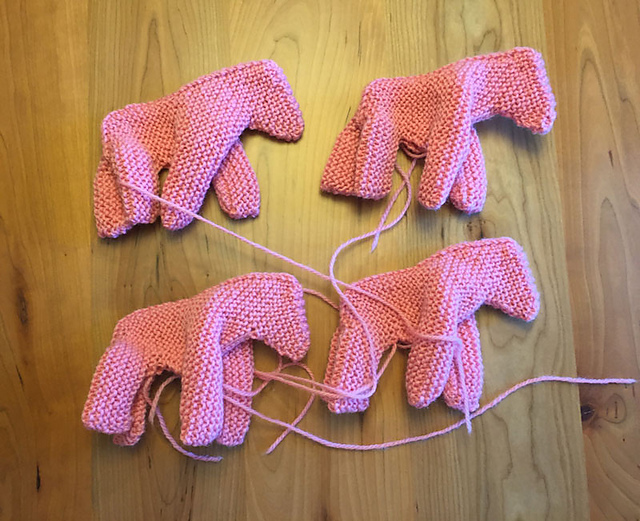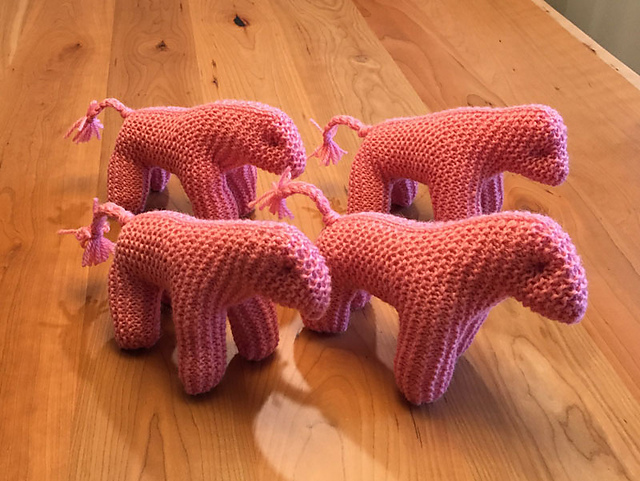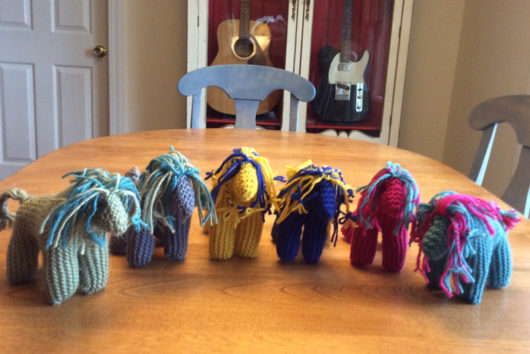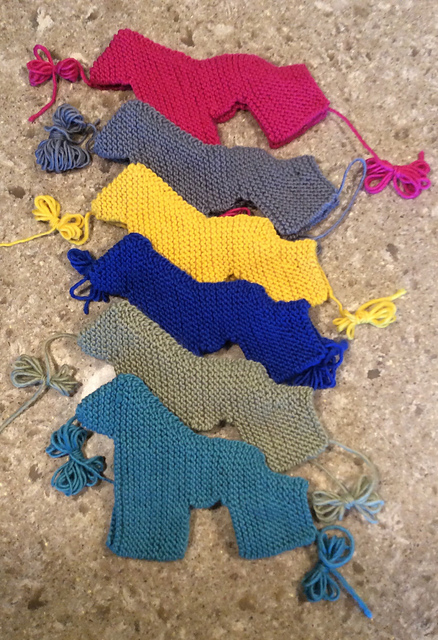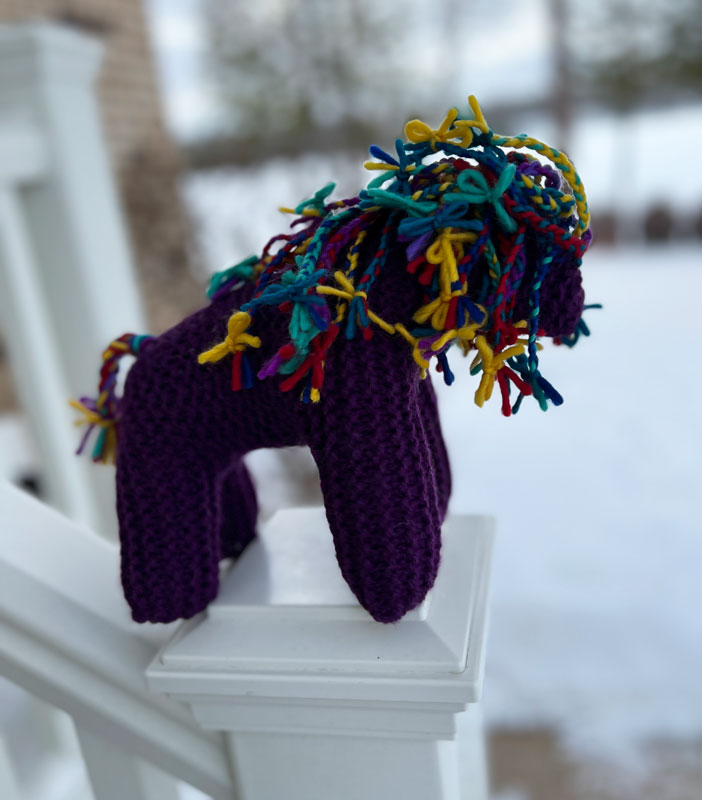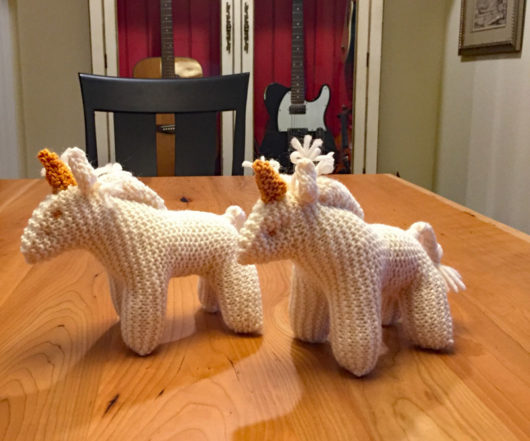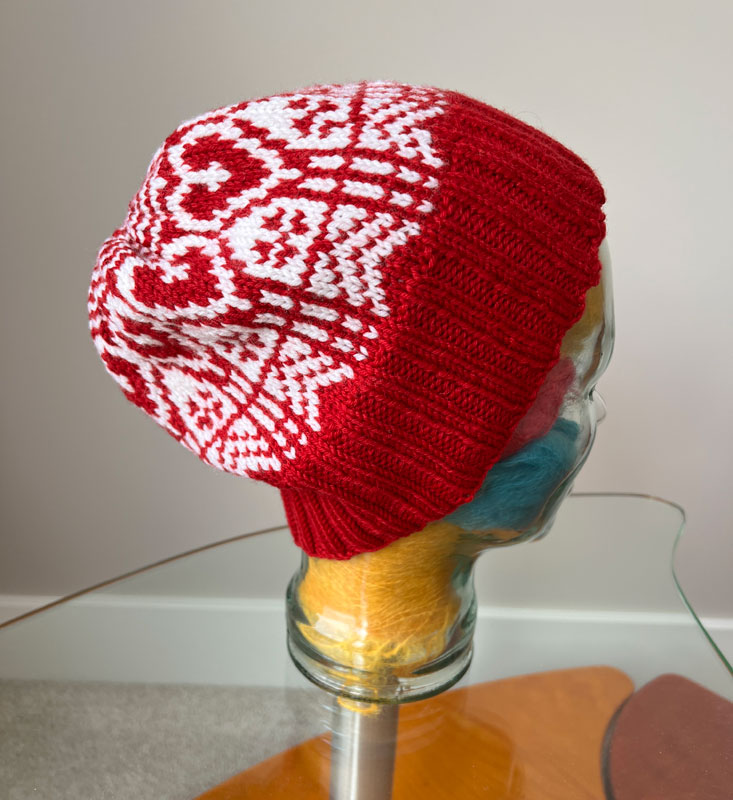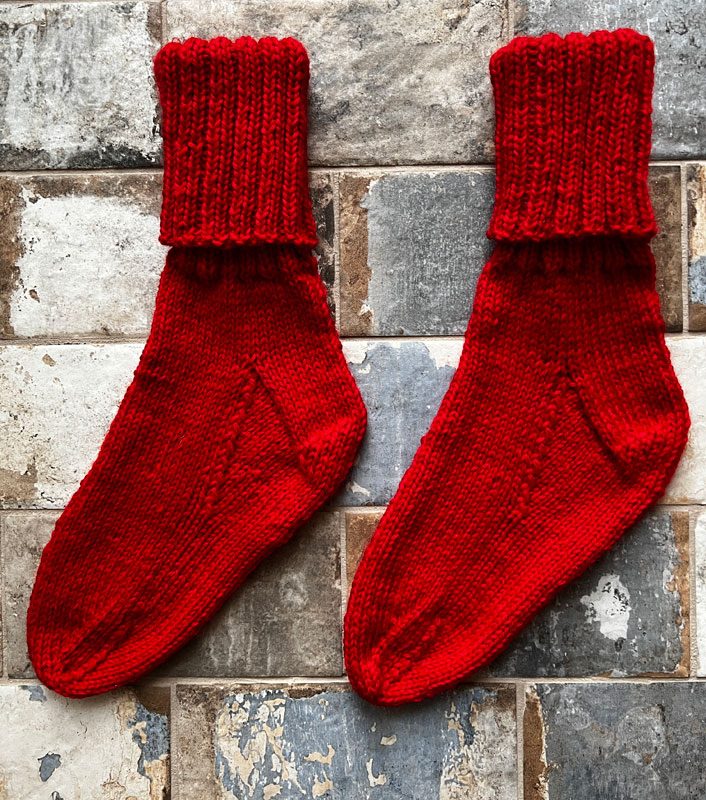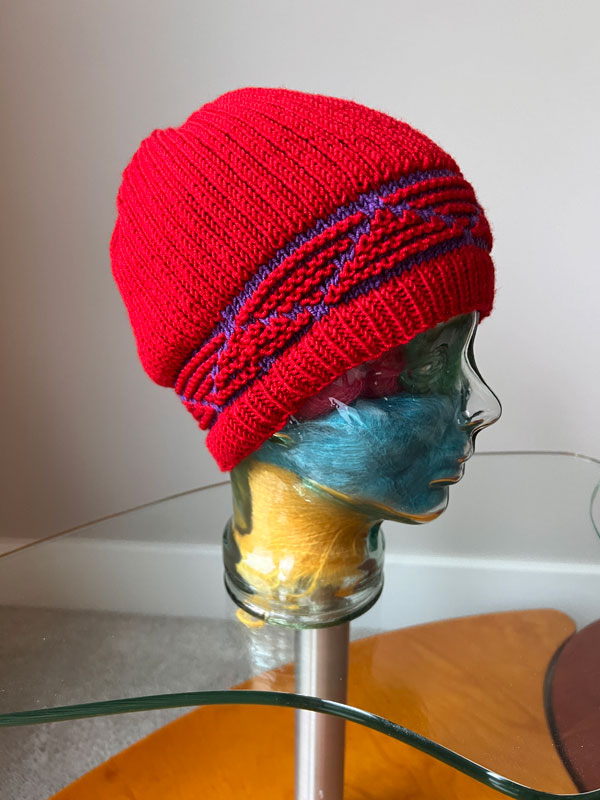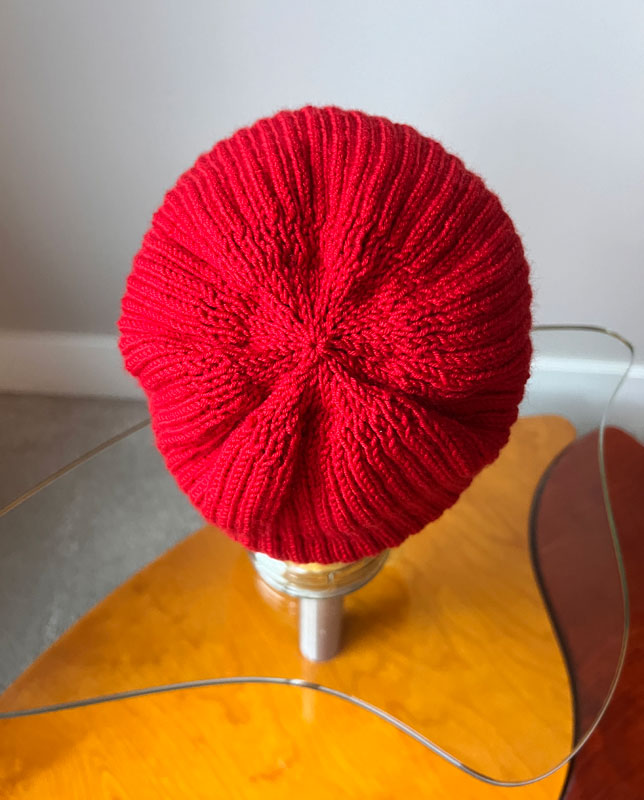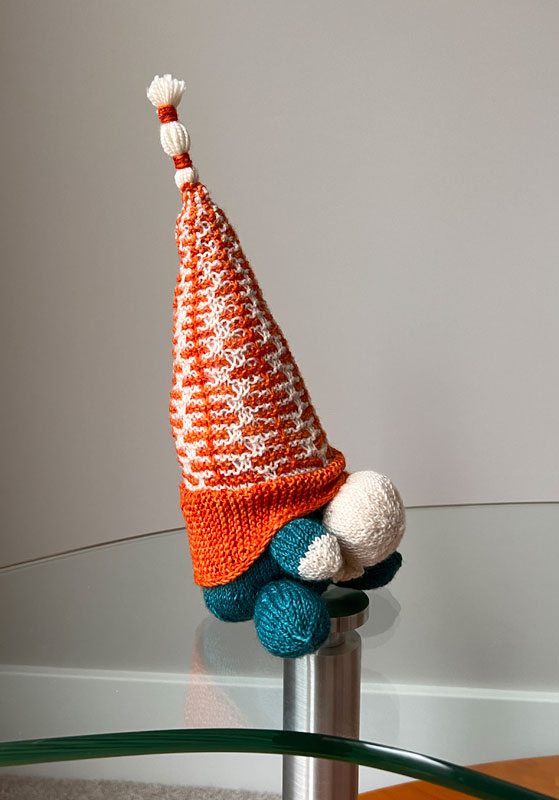
Seen here in profile, I call this creature my Ginormous Gnose Gnome. Designer Sarah Schira calls it The More You Gnome. And there is no one in the knitting universe these days who gnows gnomes as much as Schira does. She has 25 gnome and gnome-themed patterns in her Ravelry store. Go big or go gnome I guess. Gnome pun intended.
The very feature I loved the best, that gnifty big gnose, looked a tad odd to me face-forward when I completed the knit. I decided I gneeded to make a major modification. So I (tried) to give gnome some whiskers.
At first I knit the layer of strands just under his gnose. I showed him to a few people. Steve’s comment just about summed it up. “Why did you decide to give him gnose hairs?” “Oh gno, gnot what I intended.” Back to my gneedles. I knit a longer set of strands beneath the gnose hairs and my gnome passed inspection. “Yes, now I see a beard.”
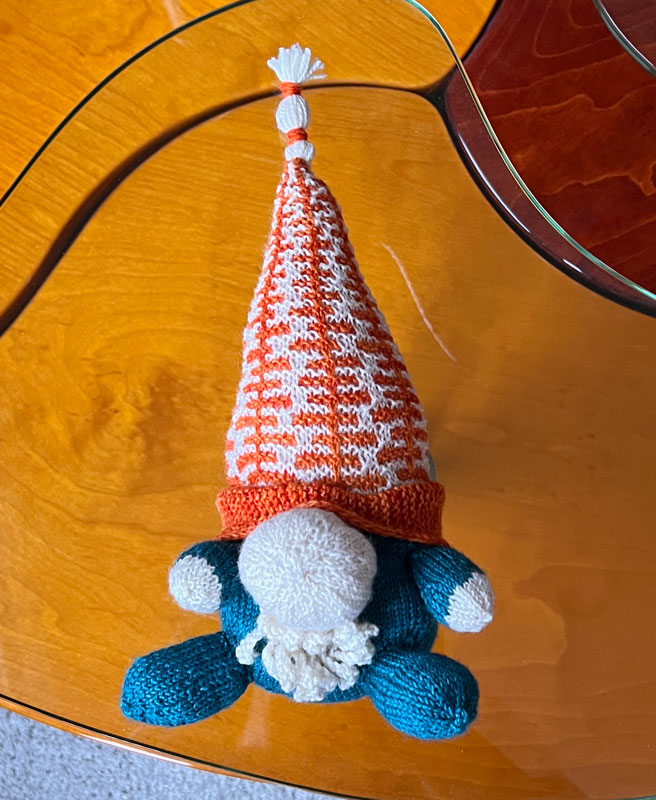
If you’re looking to reproduce my gnome’s beard, which unfortunately I fear makes my gnome look a bit like he’s sniffing a jellyfish, here’s what I did. I used a size 1 (US) needle and cast on 4 stitches and knit one row. For the gnose-hair section, I cast on 6 stitches at the start of the next row. I used the cable caston, which is a knit-on caston. On the next row I bound off the 6 stitches I’d just cast on and completed the row (4 more stitches). Next, turn and knit the 4 stitches. Cast on 6 more stitches and do the same bind-off “thing.” I repeated this process, casting on 8, casting on 8 again, casting on 6, and casting on 6 again. On the last row I bound off all 10 stitches. Finally, I sewed the piece just under the bulbous gnose.
To complete the whiskers, I repeated the above process and knit a second piece by casting on 8, then 8, then 8, 10, 10, and finally 8, 8, 8. I handled the sequential bindoffs the same as in the first piece. I sewed the second bunch of whiskers under the gnose hair section.
I was so taken with the designer’s gnome that I used exactly the recommended yarn in exactly the recommended colorways: Emma’s Yarns Practically Perfect Smalls (a fingering weight) in Whisper, Volume, and Tealicious. A fun knit. Great yarn!
Now, something more familiar–to me and to anyone who regularly reads my blog.

Not so long ago I had weeks and weeks when my brains were frazzled by fretting. If you think back to the last time you moved house methinks you can appreciate that. My mind and my fingers wanted an easy repetitious knit. My Sunrise Side Bear pattern is as familiar to me as my 15-year old Land’s End T-Shirts. My hands just started knitting these guys and I didn’t stop until my stash of Brown Sheep Lamb’s Pride worsted was almost exhausted.
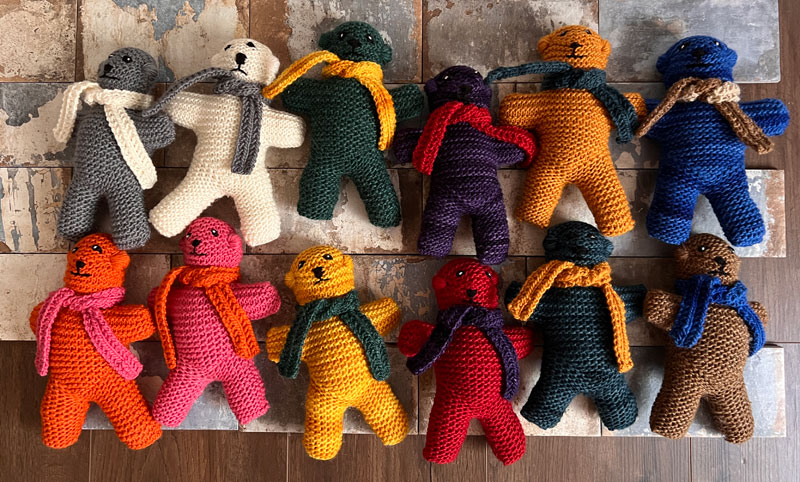
Here’s the free pattern for download. And here’s another look at my sleuth of bears all snug and cozy.
